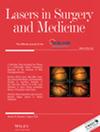Neck and chest rejuvenation with fractional 1440 and 1927-nm low-powered diode laser
Abstract
Objectives
Ultraviolet light and infrared radiation exposure to the chest and neck can result in photoaging changes, such as rhytids, skin roughness, and dyschromia, which can be treated with nonablative fractionated lasers. The low-powered fractionated 1440 and 1927-nm diode lasers have been shown to safely reduce facial photodamage. This study was conducted to investigate the safety and efficacy of a low-powered 1440 and 1927-nm nonablative fractionated diode laser in addressing photoaging symptoms, such as rhytids, skin roughness, and dyschromia, of the neck and chest.
Methods
In a prospective, single-arm, nonrandomized study, a cohort of 24 adult female patients with photodamage to their neck and chest received four treatments to these areas, administered at 4-week intervals. Treatments consisted of four passes on high settings with the 1440 nm handpiece followed by four passes with the 1927 nm handpiece. Photographs were taken at each study visit. Study investigators graded wrinkle severity, texture, and mottled pigmentation of the treated area at baseline and follow-up visit, 3 months after the fourth treatment. Subjects also rated clinical improvement of their neck and chest, along with overall appearance. Blinded evaluators used baseline and follow-up photographs to quantify improvements of rhytids and hyperpigmentation of the neck and chest using a 6-point improvement scale.
Results
Of the original cohort, 20 subjects completed all four treatments and 3-month follow-ups. The mean rhytid scores improved by 0.7 ± 1.0 for both neck and chest. Meanwhile, texture scores improved by 1.2 ± 0.4 for the neck and 1.4 ± 0.7 for the chest, with pigment scores improving by 0.5 ± 0.6 for the neck and 0.67 ± 0.7 for the chest. Statistical analysis using paired t-tests, performed on all pre- and posttreatment scores, revealed significant differences (p < 0.05) in wrinkle severity, skin texture, and pigmentation of the neck and chest posttreatment. The degree of improvement was consistent for both the neck and chest areas. Blinded evaluators graded clinical improvements in rhytids and pigmentation at 0.6 ± 1.0 and 0.8 ± 1.2 respectively, corresponding to mild improvement of both neck and chest.
Conclusions
A series of treatments with the nonablative low-energy fractional 1440 and 1927-nm diode laser appears to be safe and effective for improving rhytids, skin texture, and hyperpigmentation of the neck and chest.

 求助内容:
求助内容: 应助结果提醒方式:
应助结果提醒方式:


